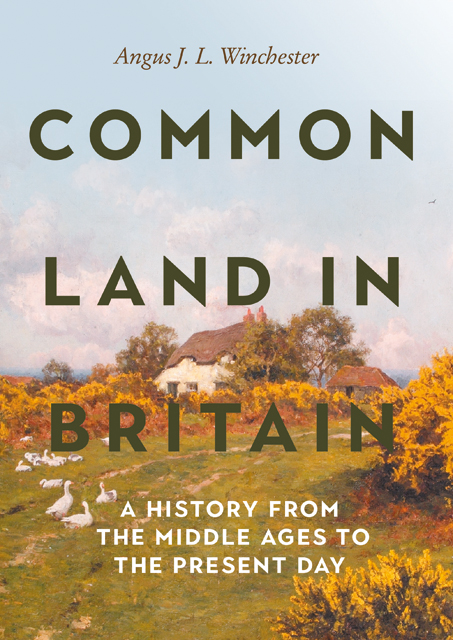Chapter 3 - Managing Communal Resources
Published online by Cambridge University Press: 20 December 2022
Summary
The potentially conflicting interests of different users required effective regulatory systems to ensure that the exploitation of communal resources ran smoothly. Pressures on commons changed over time as demand for resources fluctuated in the face of population growth or decline, and economic and technological change. Consequently, patterns of use depended on local circumstances and could vary over the space of a few miles and over comparatively short periods of time. Regulating commons therefore needed to be tailored to local circumstance.
In the medieval and early modern periods, most common land was regulated through the institutions of the manor or estate to which it belonged, the rules they formulated creating a body of customary law, particular to the locality. Across Britain, the regulatory institutions were local seigniorial courts: the manor court (especially the court leet) in England and Wales; the barony court in Scotland; the ‘swainmote’ court in forest areas. Called by the lord and presided over by his steward, the court generally required the attendance of all tenants, from whom was drawn a jury who determined cases and formulated rules. Its principal role was to uphold the lord’s rights and privileges and also to foster harmonious relations within the local community.
Regulations made and policed by a court sought to achieve those two ends and were specific to the estate in question. In some places (especially in the Midland and northern counties of England), the rules and the sanctions which applied when they were broken were drawn together into ‘pain lists’ laying out the suites of byelaws which, together with more formal articles of enquiry, formed a checklist of matters to be looked into by the court (Figure 11). Comparatively few such written statements of byelaws survive, so many courts’ deliberations presumably continued to be structured around oral memory of local custom. Taken together, pain lists, articles of enquiry and the decisions of the courts themselves can be used to reconstruct how regulations evolved across the years, particularly in the two centuries 1550–1750, from which most records survive. Even commons which fell outside manorial regulation were governed by comparable suites of byelaws.
- Type
- Chapter
- Information
- Common Land in BritainA History from the Middle Ages to the Present Day, pp. 51 - 82Publisher: Boydell & BrewerPrint publication year: 2022



